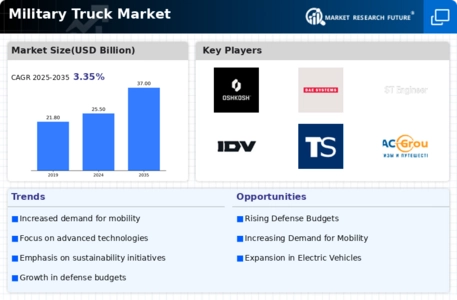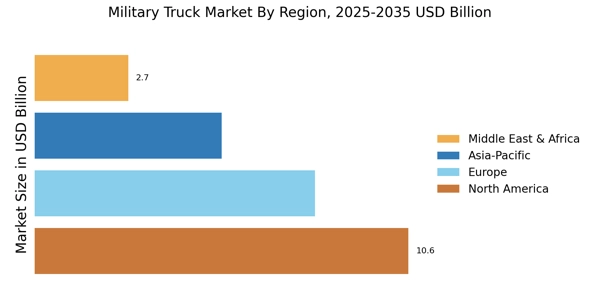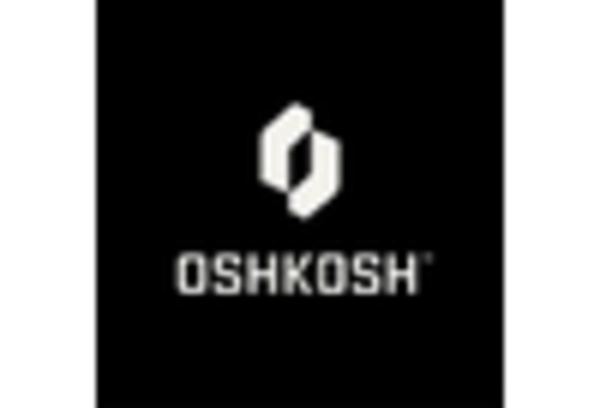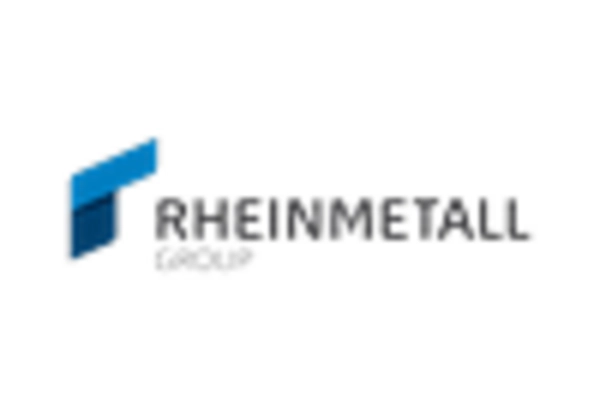Geopolitical Tensions
Geopolitical tensions are a driving force behind the Military Truck Market, as nations seek to bolster their military readiness in response to regional conflicts and security threats. The ongoing need for rapid deployment and logistical support in volatile areas has led to an increased demand for versatile military trucks. Recent assessments indicate that countries facing heightened security challenges are prioritizing investments in military logistics, which includes upgrading their fleets of military trucks. This trend suggests that the Military Truck Market will continue to expand as nations adapt to the evolving geopolitical landscape, ensuring they are equipped to respond effectively to emerging threats.
Increased Defense Budgets
The Military Truck Market is experiencing a notable surge due to increased defense budgets across various nations. Governments are allocating more resources to enhance their military capabilities, which includes the procurement of advanced military trucks. For instance, recent data indicates that defense spending has risen by approximately 3.5% annually in several regions, reflecting a commitment to modernization. This trend is likely to drive demand for military trucks that can support diverse operational needs, from logistics to combat scenarios. As nations prioritize national security, the Military Truck Market stands to benefit significantly from these budgetary expansions, leading to a robust growth trajectory in the coming years.
Technological Innovations
Technological advancements are reshaping the Military Truck Market, as manufacturers integrate cutting-edge features into their vehicles. Innovations such as autonomous driving capabilities, enhanced communication systems, and improved fuel efficiency are becoming increasingly prevalent. The introduction of electric and hybrid military trucks is also gaining traction, aligning with sustainability goals while maintaining operational effectiveness. Data suggests that the market for military trucks equipped with advanced technologies could grow by over 20% in the next five years. This evolution not only enhances the performance of military trucks but also positions the Military Truck Market at the forefront of modern warfare logistics.
Logistics and Supply Chain Optimization
The Military Truck Market is significantly influenced by the need for logistics and supply chain optimization within military operations. Efficient transportation of troops and equipment is critical for operational success, prompting militaries to invest in advanced logistics solutions. Data indicates that military logistics expenditures are projected to increase by 4% annually, reflecting a growing emphasis on enhancing supply chain capabilities. As militaries strive for greater efficiency and effectiveness, the demand for specialized military trucks designed for logistical support is likely to rise. This focus on optimizing military logistics will play a crucial role in shaping the future of the Military Truck Market.
International Collaborations and Partnerships
International collaborations and partnerships are emerging as a key driver in the Military Truck Market. Countries are increasingly engaging in joint military exercises and sharing resources, which necessitates the standardization of military vehicles, including trucks. Such collaborations often lead to shared procurement initiatives, allowing nations to benefit from economies of scale. Recent trends suggest that partnerships between defense contractors and governments are becoming more common, facilitating the development of advanced military trucks tailored to specific operational requirements. This collaborative approach is likely to enhance the competitiveness of the Military Truck Market, fostering innovation and driving growth.


















Leave a Comment